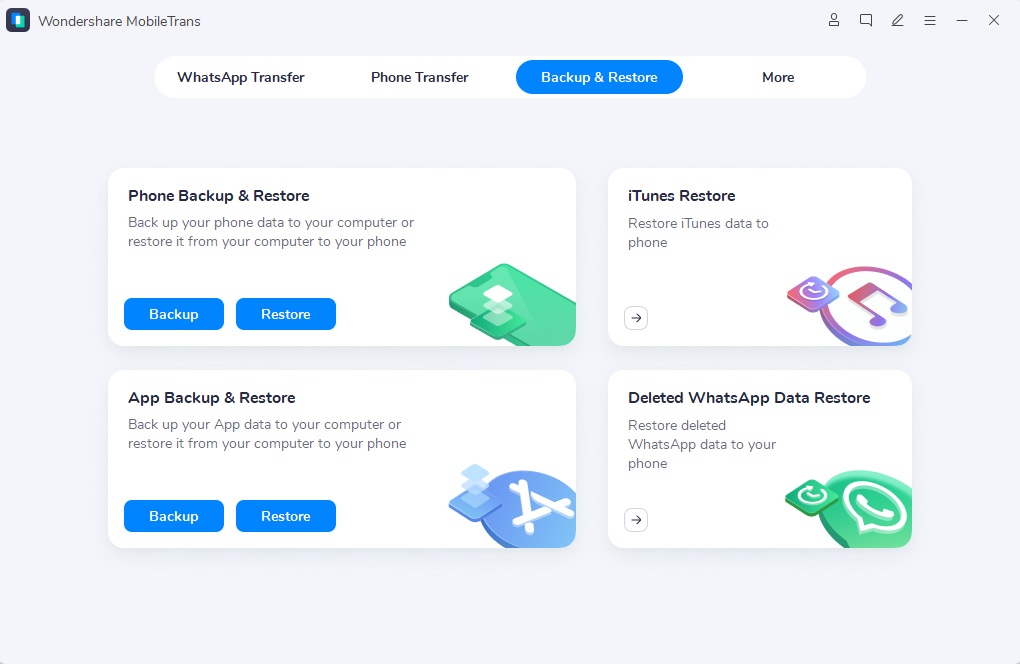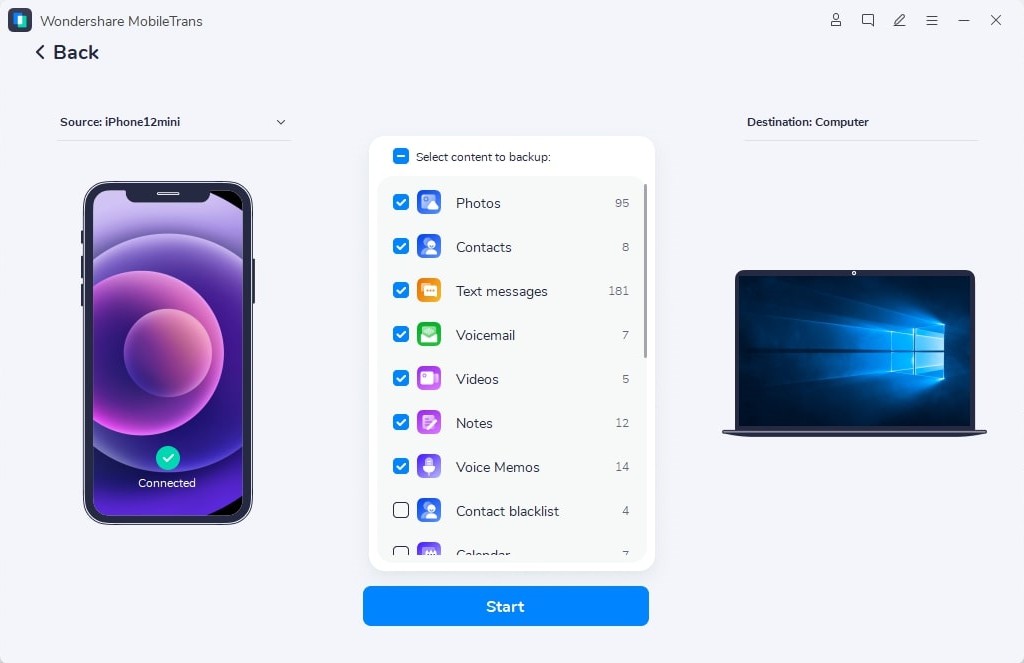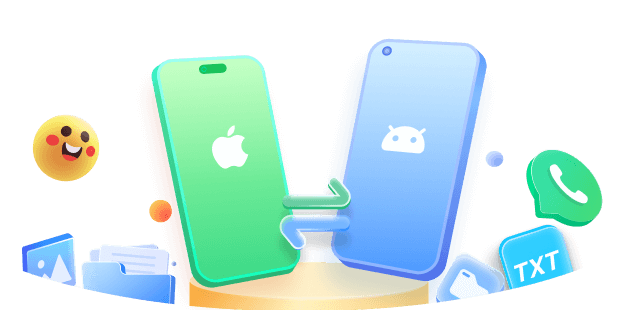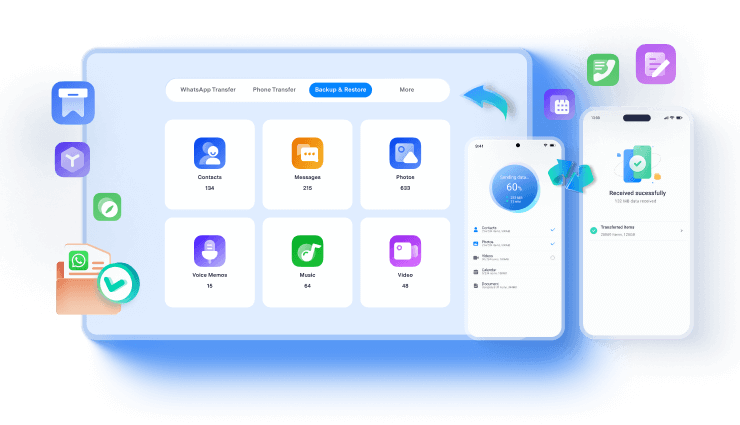Ever lost your iPhone and realized all your app data was gone? It’s a nightmare nobody wants to face. Backing up your iPhone app data is crucial to avoid losing valuable information. Whether it's photos from your last vacation, important work documents, or your game progress, knowing how to backup app data on iPhone can save you a lot of heartache.
There are several ways to backup iPhone app data. From using iCloud to iTunes, and even third-party tools, each method has its pros and cons. You might wonder which is the best method to backup iPhone app data? Or how to backup apps with data in the easiest way possible? This guide will walk you through all the options, so you can choose the one that suits you best.
We’ll dive into detailed steps for each method, from how to backup app data iPhone with iTunes/Finder to using Google Drive. Plus, we’ll compare these methods and offer tips to backup your iPhone app data efficiently. By the end of this guide, you’ll know exactly how to backup app data on iPhone and keep your precious information safe.
In this article
Part 1: Which is the Best Method to Backup iPhone App Data
Choosing the best method to backup iPhone app data depends on various factors like ease of use, storage limits, security, and cost. Different methods offer unique advantages, making it crucial to compare them.
In this section, we'll look at four popular methods: MobileTrans Tool, iCloud Backup, iTunes/Finder, and Google Drive. By comparing these options, you can decide which one best fits your needs for backing up your iPhone app data.
| Method | Ease of Use | Storage Limit | Security | Cost |
| MobileTrans | Moderate | Unlimited | High | Free/Paid |
| iCloud Backup | Easy | 5GB free, Paid plans | High | Free / Paid |
| iTunes/Finder | Easy | Depends on computer storage | Moderate | Free |
| Google Drive | Moderate | 15GB free, Paid plans | Moderate | Free / Paid |
Part 2: How to Backup iPhone App Data?
Backing up your iPhone app data is essential to protect your important information and ensure it is not lost. In this part, we will discuss four methods for backing up app data on your iPhone. Each method has its own steps, pros, and cons.
Whether you choose MobileTrans Tool, iCloud Backup, iTunes/Finder, or Google Drive, you'll have a clear guide on how to backup your iPhone app data effectively.
Method 1: Backup App Data iOS with MobileTrans Tool
MobileTrans Tool is a third-party application designed to make backing up your iPhone app data easy and secure. This tool supports a wide range of data types, including contacts, messages, photos, and app data. It's a versatile solution for users who need a comprehensive backup of their iPhone data.
One of the key features of MobileTrans Tool is its high level of security. It ensures that your data is protected during the backup process.
Additionally, the tool offers unlimited storage, which means you can backup as much data as you need without worrying about space constraints.
Wondershare MobileTrans
Back Up Your Data to Computer Easily
- • No data loss. No data leaks.
- • Support various data, including files, photos, videos, apps, contacts, apps, etc.
- • Compatible with thousands of device types acorss Android and iOS.
- • Support export Apps into IPA or APK files.

 4.5/5 Excellent
4.5/5 ExcellentHere’s how to backup app data iPhone via MobileTrans Tool:
- Download and install MobileTrans on your computer. Use a USB cable to connect iPhone device to PC. Open MobileTrans and select "Backup & Restore." Now choose App Backup and Restore.

- Select content to backup like photos, contacts, messages etc.

- Click "Start" to begin the backup process.
Method 2: Use the iCloud Backup
iCloud is Apple's native backup solution that allows you to backup your iPhone app data effortlessly. It’s integrated into the iOS ecosystem, making it a seamless and convenient option for most users. With iCloud, you can automatically backup your data, including app data, photos, contacts, and more, to Apple's cloud servers. This ensures that your data is always accessible, even if you switch to a new device.
The main advantage of using iCloud is its ease of use. You can set it up directly from your iPhone's settings, and it will handle the rest. However, iCloud offers limited free storage (5GB), which may not be sufficient for extensive backups. For more storage, you'll need to purchase additional iCloud storage plans. Despite this limitation, iCloud remains a popular choice due to its integration and convenience.
Steps to Use iCloud Backup:
- Go to Settings on your iPhone. Tap on your Apple ID profile icon. Select iCloud.

- Enable the iCloud Backup option. Now tap on Back Up Now.
Method 3: How to Backup App Data iPhone with iTunes/Finder
Backing up your iPhone app data using iTunes (for Windows) or Finder (for Mac) is a straightforward method that stores your backup on your computer. This method is beneficial because it doesn't rely on internet connectivity, and you can store backups on an external hard drive if needed. By using iTunes or Finder, you can create a complete backup of your iPhone, including app data, settings, and other important information.
One of the advantages of this method is that it’s free to use, and the backup is stored locally on your computer, giving you full control over your data. However, it requires you to connect your iPhone to your computer, which might be inconvenient for some users. Additionally, the backup size depends on your computer's storage capacity. Despite these minor drawbacks, iTunes/Finder is a reliable and effective way to backup your iPhone app data.
Steps to Use iTunes/Finder:
- Connect your iPhone to your computer. Open iTunes (Windows) or Finder (Mac).

- Click on the iPhone icon. Select Back Up Now.
Method 4: Use Google Drive
Google Drive is another option for backing up iPhone app data. It offers a decent amount of free storage (15GB) and is accessible from various devices, making it a versatile choice. With Google Drive, you can backup your app data, photos, contacts, and other files, ensuring that your data is safe and easily retrievable.
Using Google Drive for backups is relatively simple. You need to download the Google Drive app on your iPhone and sign in with your Google account. Once set up, you can choose which data to backup and start the process. While Google Drive provides ample free storage, you may need to purchase additional storage if you have a lot of data. This method requires a Google account and an internet connection to backup and access your data. Despite these requirements, Google Drive remains a popular and effective backup solution.
Steps to Use Google Drive:
- Download and install Google Drive on your iPhone. Open Google Drive and sign in with your Google account. Tap on the Menu icon and go to Settings.

- Select Backup. Choose the data you want to backup and tap Start Backup.
Part 3: Tips to Backup iPhone App Data Efficiently
Backing up your iPhone app data efficiently can save you time and ensure your information is always up to date. Here are some tips to help you backup your iPhone app data effectively:
- Regular Backups: Schedule regular backups to keep your data current. You can set automatic backups in iCloud, so you don't have to remember to do it manually. Regular backups ensure that you always have the latest data saved, reducing the risk of data loss.
- Use Multiple Methods: Don't rely on a single backup method. Use a combination of iCloud, iTunes/Finder, and third-party tools like MobileTrans. This way, even if one method fails, you have other backups to rely on. Multiple backups add an extra layer of security to your data.
- Check Storage Limits: Be mindful of storage limits on your backup methods. For example, iCloud offers limited free storage, and you might need to purchase additional space. Regularly check your storage usage and manage your backups to ensure you have enough space for new data.
- Encrypt Backups: When using iTunes/Finder for backups, enable encryption. Encrypted backups protect your data with a password, adding an extra layer of security. This is especially important if your backup includes sensitive information.
- Test Your Backups: Occasionally restore your backups to ensure they work correctly. Testing your backups helps you verify that your data is being saved accurately and can be restored when needed. This can save you from unpleasant surprises in case of data loss.
- Keep Software Updated: Make sure your iPhone and backup tools are always up to date. Software updates often include improvements and bug fixes that enhance the backup process. Keeping everything updated ensures a smoother and more reliable backup experience.
By following these tips, you can ensure that your iPhone app data is always backed up efficiently and securely. Regular backups, using multiple methods, and being mindful of storage limits will help you keep your data safe and up to date.
Conclusion
Backing up your iPhone app data is crucial to avoid losing valuable information. With methods like MobileTrans, iCloud, iTunes/Finder, and Google Drive, you have various options to choose from. Each method has its own pros and cons, so consider your needs and preferences.
Remember to backup your data regularly and use multiple methods for added security. Keeping your data safe is essential, and with the right tools and practices, it's easy to ensure your information is always protected.
By following the steps and tips outlined in this guide, you'll be well-equipped to backup your iPhone app data efficiently and effectively. Stay proactive, and you'll never have to worry about losing your important app data again.






